
© Foteini Christofilopoulou, courtesy the Royal Opera House. (Click image for larger version)
Royal Ballet
Mayerling
★★★★★
London, Royal Opera House
28 April (Watson) & 1 May (McRae) 2017
Gallery of pictures by Foteini Christofilopoulou
www.roh.org.uk
From Balanchine’s Jewels to MacMillan’s Mayerling: the Royal Ballet has been testing its dancers’ and audiences’ preferences this spring season. It’s perfectly possible to relish the work of both choreographers, though Balanchine addicts can be antipathetic to a dramatic ballet that needs not only a lengthy synopsis but a pictorial guide in the programme to the principal cast and their relationships.
A further problem is the period costumes for the women, who tend to look alike in long skirts with bustles. Nico Georgiadis, MacMillan’s designer and collaborator, found ways of accommodating the bustles for dancers (about the only authentic one is the costume for the singer, the Emperor’s mistress) but at least one bustle got out of hand – or rather, foot – on the first night.

© Alice Pennefather, courtesy the Royal Opera House. (Click image for larger version)
Inevitable fumbles at the start of a run added to the mounting tension built into the ballet. MacMillan was determined to assert his intention that Mayerling was created for a big classical company, not a dance theatre ensemble, so the opening statement, a solo for Crown Prince Rudolf on the night of his wedding, is a testing one. Edward Watson was apprehensive about the technical challenges, though his insecurity was in tune with the character’s growing instability. Watson has toned down Rudolf’s neurosis at the start, enabling us to appreciate its origins in his mother’s attitude to him in the following ‘closet’ scene, provoking his deterioration.
The encounter between Rudolf and Empress Elisabeth in her boudoir is preceded by dancing for her ladies-in-waiting, a lively group sympathetic to her difficulties. Their dances, like those for Princess Stephanie’s chambermaids in the next scene, are examples of how delightful MacMillan’s choreography can be. Once Rudolf enters, the atmosphere freezes. The Empress can barely bring herself to look at him: the pas de deux between mother and son is mostly back-to-back.

© Foteini Christofilopoulou, courtesy the Royal Opera House. (Click image for larger version)
Zenaida Yanowsky provides Elisabeth with a complex palette of emotions. Outwardly cold, unable and unwilling to respond to her son, she is warmed into womanhood by her English lover, Bay Middleton (Gary Avis, gallant and gorgeous). No wonder Rudolf is jealous and resentful. Watson’s prince, however, is already so damaged that his mother’s rejection almost can’t hurt him any further. He is already on the path to self-destruction, less vulnerable than in other interpreters’ accounts of the role.
Little does his bride, Princess Stephanie of Belgium, know how traumatic her wedding night is going to be. Francesca Hayward’s Stephanie is nervous but resolute. She won’t give in, flinging herself back at him as he sets out to brutalise her. She’s a survivor, not a victim, however badly he treats her. By the third act, she is confident in her status in the court, turning feistily against Rudolf’s (ex)mistress, Marie Larisch.

© Foteini Christofilopoulou, courtesy the Royal Opera House. (Click image for larger version)
Sarah Lamb’s Larisch is a cool schemer, concerned that her status is threatened by the Crown Prince’s marriage. She knows how to play him, not so much by sexiness as by lifting his mood. Lamb is both supple and manipulative: her successor, Mary Vetsera, will supply the sensuality she lacks. Does this Larisch love Rudolf? Probably not, because she’s definitely no mother substitute. She understands him too well.
Marianela Nunez, as yet another of Rudolf’s mistresses, Mitzi Caspar, has only a few scruples about informing on him to the Prime Minister of Austro-Hungary (Alastair Marriott). She’s the queen of the ‘notorious tavern’ Rudolf frequents for a bit of fun. He is at last at ease – and so is Nunez, enjoying herself without complications. The other women are unimportant, in vamp-to-time choreography; the brothel scene is all about the men – and Mitzi. The four Hungarian conspirators have a fine time, led by Ryoichi Hirano as the finest of them all.
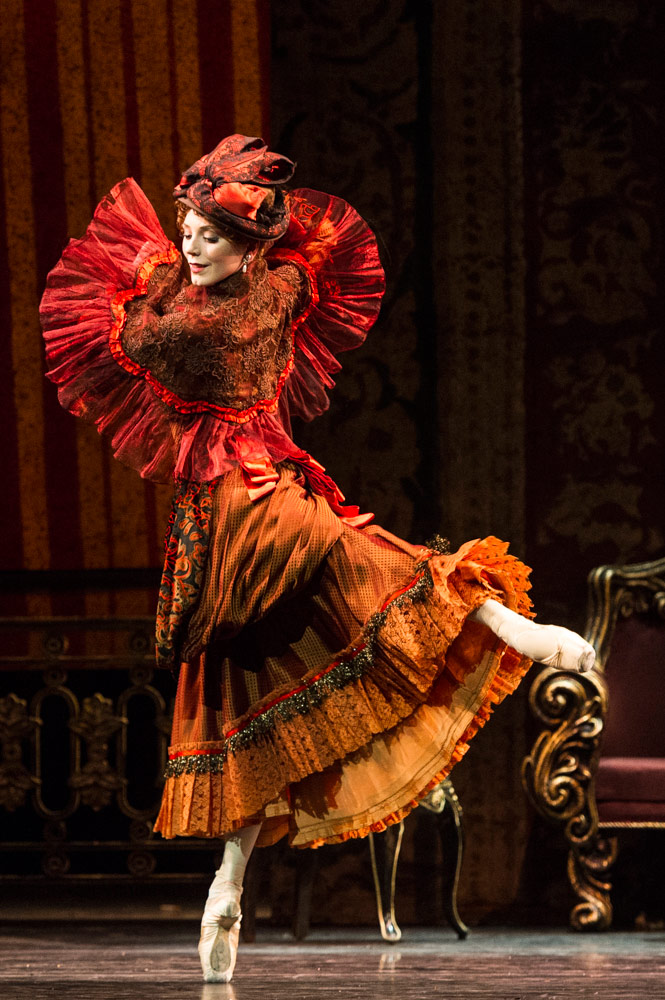
© Foteini Christofilopoulou, courtesy the Royal Opera House. (Click image for larger version)
Rudolf’s nemesis, Mary Vetsera, makes her presence felt only half-way through the ballet. Natalia Osipova, in her debut in the role, is convincingly girlish as young Mary, duplicating the steps of her ‘mentor’, Larisch. Vetsera is being set up by her mother (Elisabeth McGorian, elegantly complicit) and by Larisch to be a social-climbing courtesan. Osipova’s Vetsera is amoral, already sexually experienced, primed to please the Crown Prince.
Though she seems sweetly excited in the duplicitous scene in her mother’s house, she’s dangerously deluded. Like Watson’s Rudolf, Osipova’s Vetsera has an addictive personality, prepared to go to any extremes. She’s high on adrenaline, while he’s dependent on morphine. She’s intoxicated by her power over him, hurling her body around him in a compliant version of Stephanie’s anguished contortions. Osipova makes the most of the luscious curves that MacMillan devised for Lynn Seymour, the originator of the role; arched over Rudolf’s knees, her legs curled towards her head, she looks like a Minoan bull dancer. Her malleability hastens his downfall.
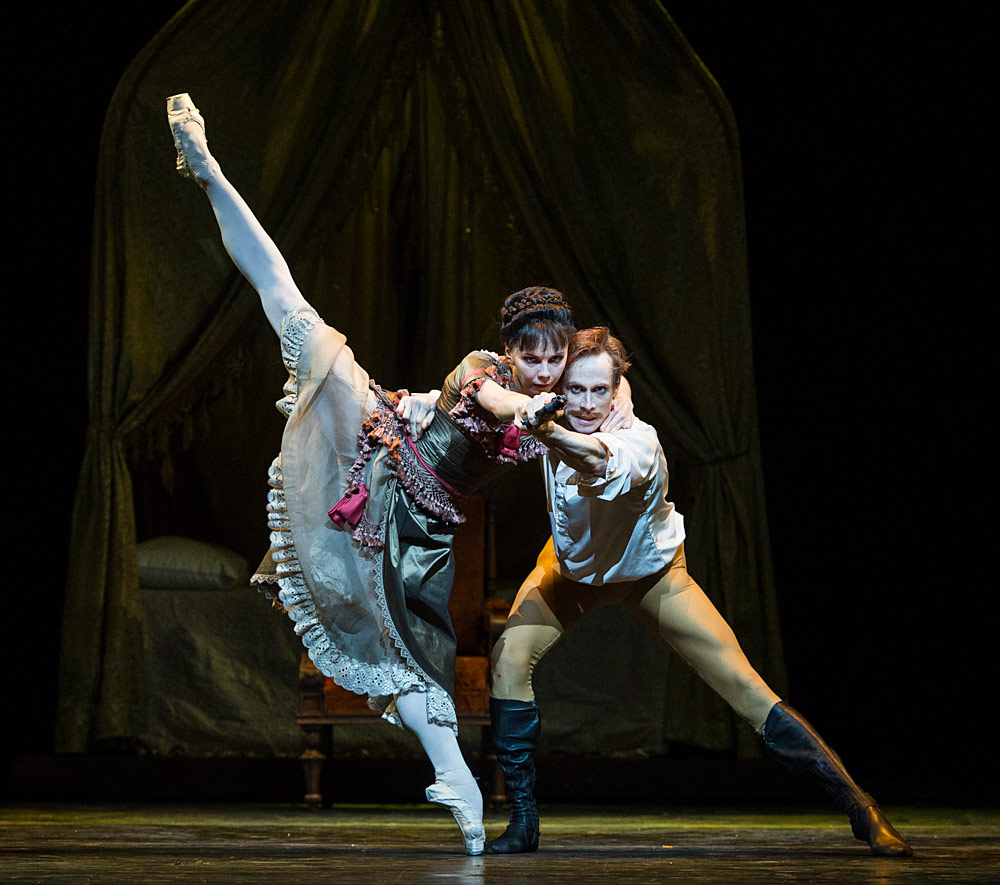
© Foteini Christofilopoulou, courtesy the Royal Opera House. (Click image for larger version)
Osipova is lethally good in the role, drawing yet another piercing performance from Watson as the by-now-psychotic Crown Prince. He has deteriorated from the paranoid misfit, more insectoid than human in Act II, to drug-ridden insanity by the time of the suicide pact in Act III. The real Marie Alexandrine von Vetsera (1871-1889) left farewell letters to her family that were discovered in a Viennese bank in 2015, long after the ballet’s creation in 1978. She did agree to commit suicide, aged 17, with the heir to the Austro-Hungarian Empire. Conspiracy theories that they were murdered were almost certainly false.
In the ballet, the only true mourner at Mary’s clandestine funeral is Rudolf’s jester, the cab-driver Bratfisch. Alexander Campbell in the role is irresistible, as a personality as well as performer. The opening night cast of this revival was superb, with eight principal dancers in key roles and a lovely mezzo-soprano, Catherine Carby, who graced the stage in two acts alongside Christopher Saunders’ Emperor Franz Josef.

© Alice Pennefather, courtesy the Royal Opera House. (Click image for larger version)
The Bank Holiday Monday brought interesting debuts from Steven McRae as Rudolf and Sarah Lamb as Vetsera, giving their own readings of the roles. McRae was no longer the bouncy show-off of Rubies and a very different monster from the one in Liam Scarlett’s Frankenstein. His Rudolf behaves like a terrier that has been mistreated all its life. Stubborn, he’s used to being rejected; he turns aggressive, savaging Princess Stephanie in Act I, shaking her like a rag doll, and killing a courtier in Act III. He gnaws at Mary Vetsera in his sex scenes with her, thrilling her with his violence.
McRae’s technical assurance means that he accomplishes the demanding choreography with almost too much control, until he finally disintegrates. Partnering women too tall for him imperils that control, making his Rudolf vulnerable despite himself. Hikaru Kobayashi’s conniving Larisch is hard for him to handle in Act I, so he dismisses her brutally. She takes her revenge: when Empress Elisabeth orders her out of Rudolf’s bedroom, Kobayashi’s response is ‘You’ll see’. She’s dangerous.
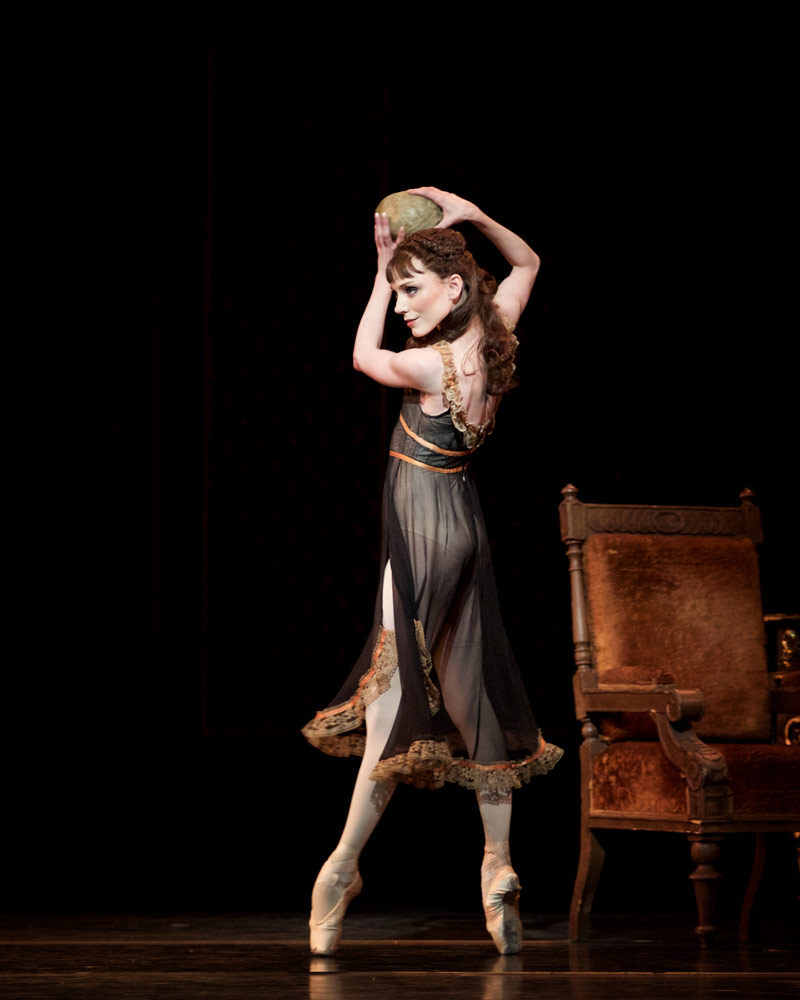
© Alice Pennefather, courtesy the Royal Opera House. (Click image for larger version)
So is Lamb’s Vetsera because she’s so susceptible. She is a pawn in Larisch’s game, taught to play-act with Rudolf’s gun and skull. She’ll do anything to please him; she has no idea how to deal with his drug-crazed mania. Yet Lamb reveals Mary is no innocent. She enjoys what she believes are sex ‘games’, offering herself as a drug, until she realises he is too far gone. She reaches for the gun at the end less avidly than Osipova does, less in love with death.
Cast against type, Lamb and McRae give intriguing interpretations of the doomed lovers. Praise, too, for Meaghan Grace Hinkis’s appealing Stephanie, Kristen McNally’s imperious Elisabeth and Johannes Stepanek’s charming Bay Middleton. With many casts during this run, the Royal Ballet is doing MacMillan proud, coming up to the 25th anniversary of his death during the 1992 revival of Mayerling.













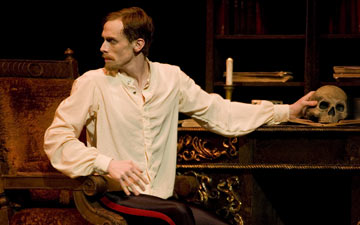

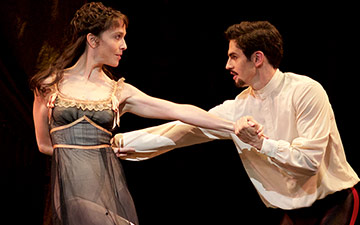
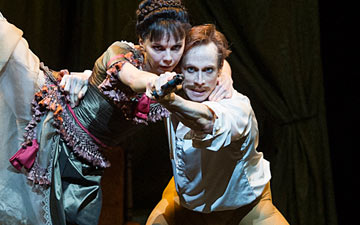
You must be logged in to post a comment.